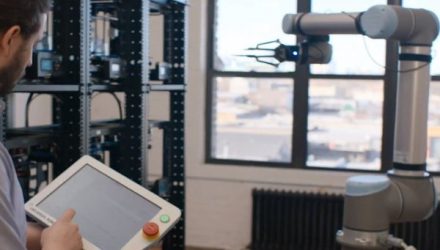To her, robots were a disruptive technology.
And they were disruptive, the first time that robots came to Spanish factories. Automotive companies laid off whole teams of workers and replace them with robots, just as mill owners laid off many factory workers in the 18th century.
- Read also: The Real Reason Workers Distrust New Technology.
These days, robotics has changed. But, robotic-related technologies are still listed 12 times in the Table of Disruptive Technology from Imperial College London.
Here are 3 arguments to support the case that robotics are disruptive:
- Robotic automation has traditionally been “all or nothing.” — Over the last 60 years, automation has required businesses to make big changes. Industrial robots are expensive and businesses needed to make a lot of other changes to their process to make the most from their investment.
- Robotic automation has completely changed some industries. — Some of the biggest industries in the world have completely reinvented their production processes with robotics, including consumer goods, food manufacture, and agriculture.
- Businesses need a completely different skill set for robotics. — Apparently, an old joke in manufacturing plants used to be that “Robots can do their work without any human input, but you need to hire 2 PhDs to operate them.” Industrial robots often require a completely new skill set, which the existing workforce does not have.
When a technology completely flips businesses and the workforce upside down, it can be the mark of a disruptive technology.
- Read also: How Robots Help the Consumer Goods Industry Adapt.
- Read also: Top 5 Ways Robotics Is Changing the Food Industry.
- Read also: Top 10 Robotic Applications in the Agricultural Industry.
Option 2: Robotics is Incremental
The second option is that robotics is not disruptive.
Jonathan Schwartz is the CPO at Voodoo Manufacturing, a 3D printing company in Brooklyn, USA. The team wanted to grow the business, but they were suffering from a bottleneck. Although the factory was only running at 10-20% utilization, they were restricted because a team member needed to remove each finished model from the printers by hand.
The team were able to add a collaborative robot to tend the 3D printers without changing their existing process. The cobot added a small, incremental improvement to their business without disrupting what was already working.

Was automation a case of “all or nothing for them? Not at all!
This is true with many new robotic systems, particularly collaborative robots. They don’t require businesses to completely overhaul their processes. Instead, cobots are used to make small, incremental changes.
Here are 3 arguments to support the case that robotics is incremental:
- “All or nothing” automation is a thing of the past. — Yes, automation was quite disruptive in the past, in those few specific cases where robots replaced entire factories of workers. However, this is much less common than people think and is rare these days. Most robots are added incrementally. This is especially true with collaborative robots which are designed to work alongside the existing human workers.
- Robotic technology is advancing relatively slowly. — Some people think that robotic technology is advancing very rapidly. However, in reality robots are improving relatively gradually. Their arrival into businesses has also been gradual (having started in the 1960s), which is not the mark of a disruptive technology.
- Robotics skills are more accessible than ever. — It is now much easier to program robots than it was in the past, particularly with cobots. You can now learn to use a robot in a matter of hours, not years as it used to be. This means that the existing workforce can learn how to do it.
Although robotics has some characteristics of a disruptive technology, its progress tends to be slow both in the wider industry and within businesses which strongly points to it being an incremental innovation.
For more news on robotics, AI and more, visit the Robotics & AI Channel.
